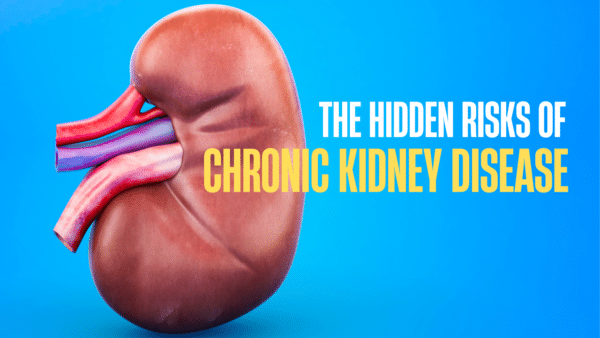Cancer of the breast mainly affects women, but it can also affect men. There is a misconception that men can develop breast cancer despite having breast tissue. In many parts of the body, cells can become cancerous and spread.
When cells in the breast start growing out of control, breast cancer begins. On an x-ray or by feeling a lump, these cells most often form a tumor. If the cancerous cells spread to distant parts of the body or invade nearby tissues, then a tumor is malignant (cancer). Women are more likely to be affected by breast cancer, but men can also be affected. One in 100 breast cancers occurs in men in the United State.
Male breast tissue:
The breast tissue of young boys and girls is limited until puberty (around age 9 or 10), with only a few ducts beneath the nipple and around the areola. Puberty causes girls’ ovaries to produce female hormones, which cause them to grow breast ducts and form lobules at the end of ducts. Male and female hormone levels in boys and men are normally low after puberty, and breast tissue does not grow as much. The breast tissue of men has ducts, but few lobules if any.
Where breast cancer begins in men:
Everyone is born with breast tissue. Lactation glands (lobules), milk ducts, and fat are all found in the breast.
A woman’s breast tissue grows more rapidly at puberty than a man’s. Because men are born with little breast tissue, they are susceptible to developing breast cancer.
Key Statistics for Breast Cancer in Men:
Approximately 97,000 new cases of breast cancer will occur in men in the United States by 2022, according to the American Cancer Society.
- The number of new cases of invasive breast cancer is expected to reach 2,710 this year
- Breast cancer will kill about 530 men this year
White men are about 100 times less likely to get breast cancer than white women. Black men are about 70 times less likely to develop breast cancer than black women. In the same way that Black women with breast cancer usually face a worse prognosis (outlook), Black men with breast cancer do as well. In general, the risk of men getting breast cancer in their lifetime is approximately 1 in 833.
Men are at risk of getting the following types of breast cancer:
- Milk duct carcinoma, also known as ductal carcinoma. Most male breast cancers are ductal carcinomas.
- It is a malignancy that begins in the glands that make milk (e.g. lobular carcinoma). In men, this type of cancer is rare because their breast tissue consists of fewer lobules.
- There are other types of cancers as well. As well as Paget’s disease of the nipple and inflammatory breast cancer, there are a number of other rare types of breast cancer that may occur in men.
Inherited genes that increase breast cancer risk:
Males with abnormal (mutated) genes have a greater chance of developing breast cancer. You are more likely to develop breast and prostate cancers if you have mutations in a number of genes, including the BRCA2 gene.
If your family has a history of cancer, inform your doctor as soon as possible. Consult a genetic counselor to see if you are at risk for cancer due to the presence of certain genes.
What Are the Symptoms of Male Breast Cancer?
Breast cancer symptoms in men include the following:
- Swellings or lumps in the breast.
- Breasts that are red or flaky.
- Dimpling or irritation of the breast.
- Discharge from the nipple.
- The nipple is pulled in or there is pain near the nipple.
It is possible for these symptoms to occur with conditions other than cancer. Visit your doctor right away if you experience any changes or symptoms.
Causes:
Male breast cancer has not been definitively determined.
Some breast cells divide rapidly in male breast cancer compared to healthy cells. This accumulation of cells can form a tumor, which may spread from the tumor site to the nearby tissue, to the lymph nodes, or to any part of the body.
What Are the Risk Factors?
A man’s risk of developing breast cancer can be increased by a number of factors. Risk factors do not guarantee breast cancer will develop.
- Getting older. As we age, our chances of developing breast cancer increase.It is most common among women over 50 years old.
- Genetic mutations. Breast cancer risk increases with inherited mutations (alterations) in certain genes, such as BRCA1 and BRCA2.
- Family history of breast cancer. A male is more likely to develop breast cancer if a close relative has had the disease.
- Radiation therapy treatment. Breast cancer is more likely to strike men who have had radiation therapy to the chest.
- Hormone therapy treatment. In the past, prostate cancer was treated with estrogen-containing drugs, which increased men’s risk of breast cancer. Estrogen is a hormone involved in female development and maintenance.
- Klinefelter syndrome. An external icon for Klinefelter syndrome is an extra X chromosome found in a male. It results in a body that produces more estrogen and less androgen (hormones that contribute to the development of male characteristics).
- Certain conditions that affect the testicles. Breast cancer risks can increase if the testicles are injured or swollen, or if the testicles are removed.
- Liver disease. Men with cirrhosis (scarring) of the liver are more likely to develop breast cancer since it reduces androgen levels and raises estrogen levels.
- Overweight and obesity. The risk of breast cancer in older overweight or obese men is higher than in normal weight men.
How Is Breast Cancer Treated?
As with women, breast cancer treatment depends on the size and spread of the tumor in men. The treatment may consist of surgery, hormone therapy, radiation therapy, chemotherapy, and targeted therapy.
Conclusion:
In our society, breast cancer is typically considered a women’s disease, but men are also susceptible to breast cancer. Researchers estimate that 500-600 men die each year from breast cancer.
It is important to get tested if you have symptoms!
Links:
https://www.breastcancer.org/types/male-breast-cancer?
https://my.clevelandclinic.org/health/diseases/9011-male-breast-cancer
https://www.cdc.gov/cancer/breast/men/index.htm
References:
- Ferzoco RM, et al. The epidemiology of male breast cancer. Current Oncology Reports. 2016;18:1.
- Cameron JL, et al. The management of male breast cancer. In: Current Surgical Therapy. 12th ed. Philadelphia, Pa.: Elsevier Saunders; 2017. https://www.clinicalkey.com. Accessed Feb. 5, 2018.
- Gradishar WJ. Breast cancer in men. https://www.uptodate.com/contents/search. Accessed Feb. 5, 2018.
- Male breast cancer treatment (PDQ). National Cancer Institute. https://www.cancer.gov/types/breast/patient/male-breast-treatment-pdq. Accessed Feb. 5, 2018.


